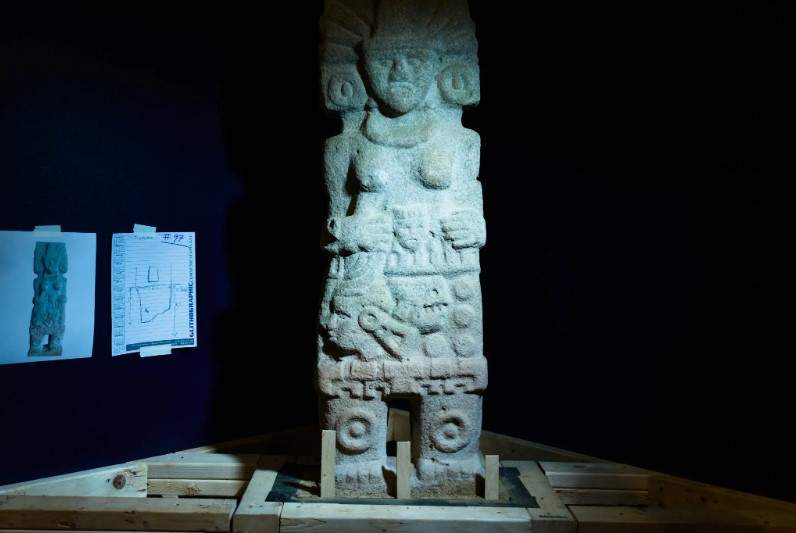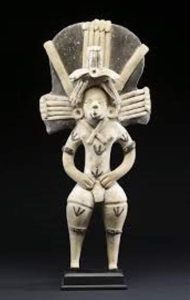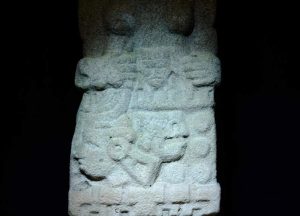 The woman, carved in pale stone, wears a peaked headdress, circular earrings and the wide hip belt and kneepads of an ancient Mesoamerican athlete. Her expression is fierce, her pose triumphant. In her right hand, she grips the severed head of a sacrificial victim by the hair.
The woman, carved in pale stone, wears a peaked headdress, circular earrings and the wide hip belt and kneepads of an ancient Mesoamerican athlete. Her expression is fierce, her pose triumphant. In her right hand, she grips the severed head of a sacrificial victim by the hair.
The sculpture is the first life-size representation of a ritual ballplayer found to date in the Huasteca, a tropical region spanning parts of several states along the Gulf Coast of Mexico.
The ballplayer will be among the most important artifacts in an exhibit, “Ancient Huasteca Women: Goddesses, Warriors and Governors,” at the National Museum of Mexican Art in Chicago, which opened 26 April. This is the first time the piece, which was discovered by landowners about 50  years ago near Álamo, Veracruz, has been on public display.
years ago near Álamo, Veracruz, has been on public display.
Kim N. Richter, a historian of pre-Columbian art at the Getty Research Institute in Los Angeles and an expert on female statues from the region, had not seen the piece. In the Classic Period (A.D. 200 to 950), “all we have are ceramic figurines . . . They’re beautiful, they’re exquisite, but to have something in stone would be really remarkable.”

The piece has yet another unique element. “, , , below the head of the decapitated person there is a glyph that is possibly the name of the person whose head was cut off,” said Dr. María Eugenia Maldonado, pre-Columbian Huastecan expert. “Names took the form of a sign and a number signified by circles: It appears the individual was known as Four Death.
“It’s not an anonymous symbol of a sacrificial ritual,” said the museum’s chief curator. “It is actually somebody who existed, a person whose head she’s holding.”

Leave a Reply